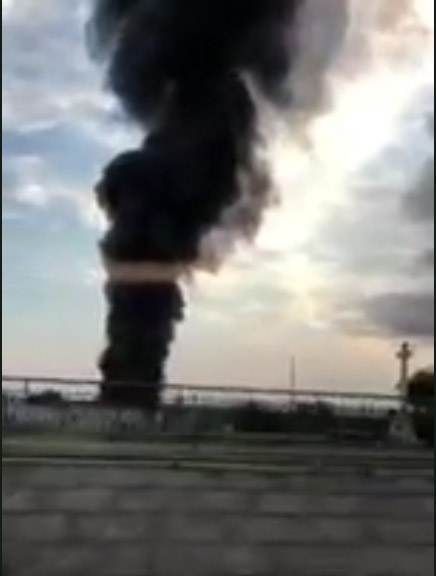Yesterday’s tyre blaze in Salford produced a spectacular plume of smoke, disrupted train services and prompted a warning for nearby residents to shut their doors and windows.
Nasty though it was, firefighters quickly brought the blaze under control. But in this summer of fires raging around the world, it made us think about why burning tyres in particular is such bad news for our health and the environment.
What happens when you burn a tyre?
We’ve blogged before about the incredible technology in modern tyres. To do their job, tyres are constructed from over 200 different raw materials. Chief among these is rubber: a typical passenger tyre contains around 30 types of synthetic rubber and 8 types of natural rubber.
Many of these chemicals are combustible. Tyres release a considerable amount of heat when burned, and in parts of the developing world they are used as a fuel source. For example, many pottery kilns in the Middle East and West Asia make use of waste tyres, especially if traditional fuel prices are high.
It’s no surprise that burning that many chemicals produces toxic compounds. A burning tyre produces a laundry list of harmful substances that include:
-
- particulates
- carbon monoxide
- sulphur oxides (SOx)
- nitrogen oxides (NOx)
- volatile organic compounds (VOCs)
- polynuclear aromatic hydrocarbons (PAHs)
- dioxins
- hydrogen chloride
- benzene
- metals such as cadmium, mercury, chromium, and vanadium
We could go on, but you get the idea.
These chemicals are associated with an equally long list of health problems, including heart disease, respiratory problems and cancer.
The oil problem
On top of all this, burning tyres releases substantial quantities of oil. The US Environmental Protection Agency estimates that a million tyres produce around 55,000 gallons of run-off oil. We make that about 250 ml of oil per tyre, or enough to fill a Red Bull can. While that may not sound like much, oil is really unpleasant stuff that is devastating for the environment.
What’s worse, attempts to extinguish tyre fires with water can end up dispersing the oil, creating even more damage.
Tyre megafires
Even small tyre fires pose considerable risks to public health and the environment, but the problems increase exponentially with tyre megafires. Whenever huge quantities of waste tyres are dumped or stored in one place, there’s always the potential for a fire to start. And once the blaze get going, they can be staggeringly difficult to extinguish.
Take the Heyope tyre blaze, in Knighton, Wales. Started by arsonists in 1989, firefighters couldn’t stop it from spreading to an estimated 10 million tyres. It was still smouldering in 2004, 15 years later.
Even when the fire is extinguished, clean-up efforts can take years. When 7 million tyres caught fire in Rhinehart, West Virginia in 1983, the blaze had finished after nine months — but the EPA didn’t finish cleaning up until 2002.
Can anything be done?
Unfortunately, in some parts of the world, the problem is likely to get worse. As climate change starts to bite and heatwaves become more frequent, fires of all types are probably going to rise. However, in the UK, the problem has been reduced by a 2006 European directive forbidding sending waste tyres to landfill. Therefore, as a UK consumer, the biggest impact you can have is to use a reputable tyre company that disposes of waste tyres responsibly.
For all tyre advice, quotes or to book your car in for fitting, please get in touch. We supply and fit tyres throughout South Oxfordshire. Don’t forget, we come to you at home or at work!

